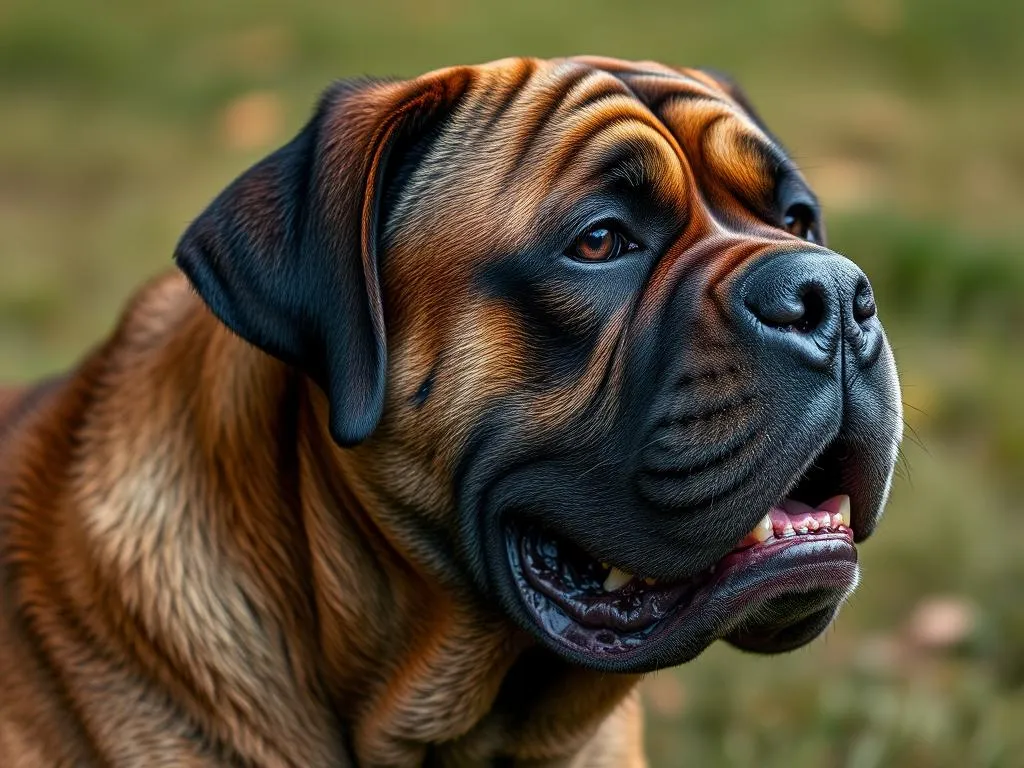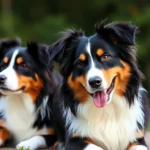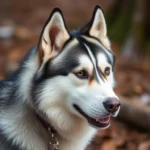
Introduction
Mastiffs are some of the most recognizable and beloved dog breeds around the world. Known for their impressive size and gentle demeanor, these dogs have a long history as loyal companions and protectors. Understanding the different types of mastiffs is essential for prospective owners, as each breed has unique characteristics, care requirements, and temperamental traits. This article aims to educate readers on various mastiff breeds, their histories, and the specific needs they may have.
Understanding Mastiffs
Definition of Mastiffs
Mastiffs belong to a group of large, powerful dogs characterized by their robust build and noble appearance. Historically, they were used for various purposes, including hunting, guarding, and as companions. The origins of mastiffs can be traced back to ancient civilizations, where they played vital roles in protecting livestock and humans alike.
Common Traits of Mastiffs
Mastiffs share several common traits that make them distinctive:
-
Size and Physical Appearance: Most mastiffs are large dogs, often weighing between 100 to 200 pounds. They typically have broad heads, powerful jaws, and muscular bodies.
-
Temperament and Personality Traits: Known for their calm and gentle nature, mastiffs are often described as affectionate and protective. They tend to be good with children and can be loyal family members.
-
Lifespan and Health Considerations: The average lifespan of mastiffs ranges from 8 to 12 years. They can be prone to certain health issues, such as hip dysplasia and bloat, which prospective owners should be aware of.
Different Types of Mastiffs
English Mastiff
-
History and Origin: The English Mastiff’s history dates back to ancient Rome, where they were used as war dogs. They have since evolved into loving family pets.
-
Physical Characteristics: English Mastiffs are among the largest of the mastiff breeds. Males typically weigh between 160 to 230 pounds, with a short coat that can range in color from fawn to brindle and apricot.
-
Temperament and Behavior: Known for their gentle disposition, English Mastiffs are often described as docile giants. They are protective of their families but can be friendly with strangers.
-
Care and Maintenance: Regular exercise is essential, but they are not overly demanding. Grooming needs are minimal due to their short coat, while a balanced diet is crucial to prevent obesity.
Bullmastiff
-
History and Purpose: The Bullmastiff was developed in the 19th century to guard estates. They are a mix of bulldog and mastiff, bred for their strength and speed.
-
Physical Characteristics: Bullmastiffs are slightly smaller than English Mastiffs, generally weighing between 100 to 130 pounds. They have a short, dense coat that is usually brindle, fawn, or red.
-
Temperament and Behavior: Bullmastiffs are known for their loyalty and protective instincts. They are affectionate with family but can be reserved with strangers.
-
Care and Maintenance: They require moderate exercise and benefit from mental stimulation. Regular grooming is recommended to minimize shedding.
Neapolitan Mastiff
-
Unique Features: The Neapolitan Mastiff is famous for its loose, wrinkled skin and distinctive appearance. Their folds give them a unique look, making them stand out among different types of mastiffs.
-
History and Origin: This breed has roots in ancient Rome and was used as a guard dog. They were also used in the arena for dog fights.
-
Temperament and Socialization Needs: Neapolitan Mastiffs are known for their loyalty and protective nature. Early socialization is vital to ensure they are well-adjusted around other dogs and people.
-
Health Issues to Consider: They can be prone to health issues like hip dysplasia and certain skin conditions. Regular veterinary check-ups are essential.
Tibetan Mastiff
-
Historical Background: The Tibetan Mastiff has a rich history, often associated with Tibetan culture and used to guard sheep from predators.
-
Physical Characteristics: They are large, with males typically weighing between 90 to 150 pounds. Their thick coat protects them from harsh weather conditions and comes in a variety of colors.
-
Temperament and Social Behavior: Tibetan Mastiffs are independent and can be aloof, making early socialization and training important. They are known to bond closely with their families.
-
Care Needs and Challenges: They require plenty of exercise and mental stimulation. Their thick coat also needs regular grooming to prevent matting.
French Mastiff (Dogue de Bordeaux)
-
Distinctive Features: The French Mastiff is known for its large, square head and muscular build. They have a short, fawn-colored coat with a distinctive dark mask.
-
History and Purpose: Historically, these dogs were used for guarding and as working dogs in various capacities, including pulling carts.
-
Temperament and Suitability as a Family Pet: French Mastiffs are known for their affectionate nature and strong bond with their families. They can be protective but are generally gentle.
-
Health Considerations: They are prone to certain health issues, including heart problems and hip dysplasia, so regular veterinary care is essential.
Spanish Mastiff
-
Role in Livestock Guarding: The Spanish Mastiff has been used for centuries to guard livestock in Spain. They are known for their protective instincts and loyalty.
-
Physical Attributes: They are large, often weighing between 120 to 200 pounds, with a thick, shaggy coat that can be various shades of fawn, brindle, or black.
-
Temperament and Training Requirements: Spanish Mastiffs are known to be gentle giants but require consistent training and socialization, as they can be wary of strangers.
-
Care and Exercise Needs: They require moderate exercise but are generally laid-back. Regular grooming is necessary to manage their thick coat.
Other Notable Mastiff Breeds
While the above breeds are the most well-known, there are several other lesser-known different types of mastiffs:
-
Argentine Mastiff: Known for their strength and loyalty, they are used in hunting and guarding. They have a muscular build and require regular exercise.
-
Brazilian Mastiff (Fila Brasileiro): This breed is known for its protective nature and loyalty to its family. They require early socialization and training.
These breeds share common traits with their more famous counterparts but have unique characteristics that make them special.
Choosing the Right Mastiff for You
Factors to Consider
When considering a mastiff, it’s crucial to evaluate several factors:
-
Living Environment: Mastiffs require ample space to move around. Consider your home size and outdoor space to ensure your selected breed will be comfortable.
-
Family Dynamics: If you have children or other pets, some mastiff breeds may be more suitable than others.
-
Activity Level and Lifestyle: Different mastiff breeds have varying exercise needs; some may require more activity than others.
Matching Temperament to Owner Needs
Understanding the temperament of each mastiff breed is essential for a successful match. For example, if you lead a more active lifestyle, breeds like the Bullmastiff may suit you better than the more laid-back English Mastiff. Socialization and training are essential in ensuring your mastiff fits well into your home and lifestyle.
Caring for a Mastiff
Nutrition
Mastiffs have specific dietary needs due to their size and metabolism. A high-quality, balanced diet is crucial. Consider the following:
-
Dietary Needs: Look for dog food specifically formulated for large breeds. Ensure it contains adequate protein and fat levels to support their growth and energy needs.
-
Recommended Feeding Practices: Divide their daily food intake into two meals to prevent bloat, a common concern in larger breeds. Always provide access to fresh water.
Exercise Requirements
While mastiffs are generally not as active as some other breeds, they still require regular exercise to maintain their health:
-
Importance of Regular Exercise: Regular walks and playtime are essential to keep them physically fit and mentally stimulated.
-
Suggested Activity Types: Low-impact activities such as walking, swimming, and short play sessions are ideal. They should avoid excessive jumping or running due to their size.
Health Care
Routine health care is vital for mastiffs to prevent common issues:
-
Common Health Issues: Be aware of potential health problems such as hip dysplasia, bloat, and heart conditions. Regular vet visits are essential for early detection.
-
Routine Veterinary Care: Schedule annual check-ups, vaccinations, and dental care to keep your mastiff healthy.
-
Importance of Preventative Health Measures: Regular exercise, a balanced diet, and dental hygiene can significantly impact your mastiff’s overall health.
Conclusion
Selecting the right mastiff breed is crucial for a harmonious relationship between you and your new pet. Understanding the different types of mastiffs and their unique traits can help you make informed decisions. Each breed has specific needs and characteristics that should be considered before bringing one into your home. Responsible mastiff ownership involves ongoing education and commitment to care, ensuring that these gentle giants thrive in your family.
FAQs
What is the best mastiff breed for families with children?
The Bullmastiff and English Mastiff are known for their gentle nature and protective instincts, making them suitable for families.
How much exercise does a mastiff need daily?
Most mastiffs require moderate exercise, around 30 to 60 minutes of activity each day, depending on the breed.
Are mastiffs good guard dogs?
Yes, most mastiff breeds have strong protective instincts and can serve as excellent guard dogs for homes and families.
What are common health issues in mastiffs?
Common health issues include hip dysplasia, bloat, and heart conditions, emphasizing the importance of regular veterinary care.
How can I train my mastiff?
Start with basic obedience training and socialization from a young age. Positive reinforcement methods work best for mastiffs, as they respond well to praise and treats.









